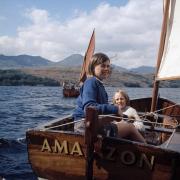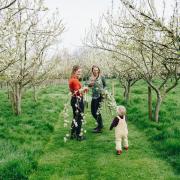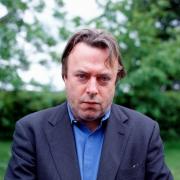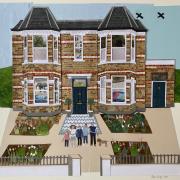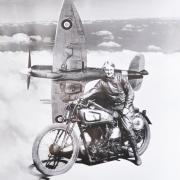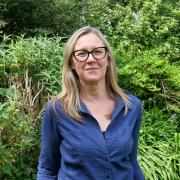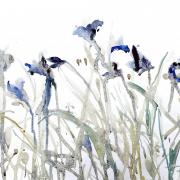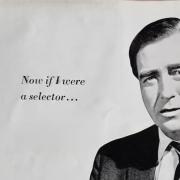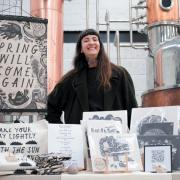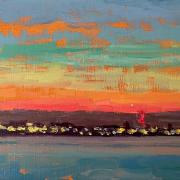He was Britain’s first recorded black botanist and a pioneering preacher. To celebrate Black History Month, FAITH ECKERSALL recounts the story of one of Hampshire’s most extraordinary sons

The year is 1809. King George III is still on the throne and the Napoleonic wars are dragging on. Meanwhile, in early December in the village of Twyford, just south of Winchester, one Amy Birch is giving birth to a son.
Unlike everyone else in Twyford apart from his father, Thomas Birch Freeman is black. In his time – which will stretch more than 80 years – he will become Britain’s first black botanist, corresponding with and collecting for the Royal Botanic Gardens at Kew.
He will also become a lay physician, a successful diplomat and a beloved and respected pioneer missionary to numerous countries in West Africa.
A painting of Birch Freeman after the engraving by T A Dean, held by the National Portrait Gallery, shows a good-looking man, well-dressed in a ruffled shirt and smart jacket. Another image shows him similarly attired, with an intense, faraway stare.
Contemporaries and admirers, of which he had many, described him as educated and cultured and this, combined with his relative height, at nearly six foot, would have made him an intriguing figure.
There appears to be little record of how his father, who was also called Thomas and is believed to have achieved emancipation from slavery, came to Twyford.
Black people in rural Hampshire were a rarity although more than a few melancholic graves, such as the one in Kingsclere which plainly states in the language of the day: ‘Mary Johnson, a negro’ mark the passing of those who did live here.

Birch Freeman’s mother, Amy, had been a servant and it is recorded that his father was a gardener, which may explain Birch Freeman’s lifelong interest in plants.
The family lived in a ‘middle class’ home opposite the Dolphin pub at Twyford crossroads. If you pause at the traffic lights there today you can still see the pub, which has been converted to residential use, and the properties around.
The Freeman home was close to a Wesleyan preaching house lived in by a cobbler. It is claimed Birch Freeman enjoyed pranking the neighbour by dangling a string up and down the unfortunate man’s chimney.
However, according to John Milum, whose book about Birch Freeman, ‘Missionary Pioneer to Ashanti, Dahomey and Egba’ records his life, the child eavesdropped on a Wesleyan session one day where he hears, “Words that were not only the means of his conversion but which influenced his whole after life.”
Tragedy struck the family after Thomas senior died when Birch Freeman was just six but he appears to have been able to continue his studies, with suggestions he trained in botany and plantsmanship at Kew, crucially learning the plants’ Latin names. Given this was an era in which 40 per cent of men and 60 per cent of women could not read and write, his erudition was all the more remarkable.
By 1834 he’d landed a job as a botanist and gardener for Sir Robert Harland at his Orwell Park estate near Ipswich in Suffolk. Harland appears to have held his charismatic young plantsman in some regard, helping him with his education - Birch Freeman set up his own library in an outbuilding where he pursued his botanical studies.
What didn’t please his employer was Birch Freeman’s Methodist activism. Methodists were seen as champions of the working classes and their simpler style of worship was regarded by some as a potential threat to the Anglican church.

Harland – perhaps fearing the loss of his plantsman – gave him time to think it over but Birch Freeman’s mind was made up. The two parted company and Birch Freeman turned his attention to preaching the gospel with the aim of becoming a missionary in Africa.
He approached the Wesleyan Missionary Society in 1837. He must have been good because after witnessing his rousing test sermon they snapped him up.
However, according to Garden Historian and Gardener’s World presenter, Advolly Richmond, who is making a study of Birch Freeman, “One of the major reasons for his recruitment was that because the church had lost so many missionaries to disease, they felt his African heritage would give him some resistance to it and they were right!”
With a quick pause to take a wife – like his father he chose a housekeeper, Elizabeth Boote, they set off for Africa. They arrived on the Gold Coast in January 1838 in the country now known as Ghana. But disaster struck. Both contracted a disease thought to be malaria within weeks of their arrival and Elizabeth sadly died.
Mustering his faith, Birch Freeman set about completing the Wesleyan church at Cape Coast and threw himself into building yet more churches and schools. By the end of his life he was said to have founded more than 80.
He didn’t forget his beloved plants, however, immersing himself in his botanic studies and describing many specimens. According to Advolly Richmond, one of these included the ‘miracle fruit’, Synsepalum dulcificum, so called because it tricks taste buds into perceiving sour foods as sweet.
Contemporary accounts suggest that many missionaries to West Africa sincerely believed they were helping to atone for the evils of the slave trade. Along with the word of God they believed they were bringing education and help to people living lives blighted by disease and what was called ‘fetishism’ – which involved ritual and human sacrifice.
Whilst Birch Freeman’s own memoir records the people he met as being friendly and kind, “I shall never forget the joy which beamed in their countenances as they seized me by the hand and bade me welcome” he wrote, he also witnessed utter horror.
As well as fetishistic sacrifice he came across a heart-rending scene of more than 600 men and women tethered by the neck, being taken to a ship to be sold as slaves. At least four of the captives deliberately drowned themselves. The son of a freed slave, it’s not difficult to imagine Birch Freeman’s thoughts and it is understood he notified the British authorities about the incident.
In 1840, needing more funds for the missionary work, he returned to England as the senior Wesleyan minister of the Gold Coast and preached to admiring crowds, many of whom had read his published journals which had made him a minor celebrity.
There was also a reunion with his former employer, Sir Robert Hartland, who, he was delighted to learn, had built a new greenhouse to care for the exotic plants he’d brought back with him.
On his return to Africa, with a new wife, Lucinda, in tow, Birch Freeman took a phaeton carriage as a gift from the Wesleyan Methodist Committee to the King of Ashanti. He became the first Christian to be allowed into the Ashanti Kingdom in 1839 and whilst waiting for the King to receive him, went on flower-hunting expeditions.
Following the death of his second wife, after gruelling trips to preach and persuade rulers to allow the Wesleyans to set up churches and schools, he eventually resigned from the Methodist Mission after innocently over-spending his budget.
Governor Sir Benjamin Pine employed him as Accra district’s administrative and civil commander and in 1860 he established a 14-acre farm called Beulah Gardens where he built a house to live in with his third wife, who was of African heritage.
Birch Freeman continued to pursue his love of botany; collecting orchids in the forests, growing fruit and vegetables and corresponding with Kew Gardens. There are also reports of him working as a lay physician, treating ailments and fevers.
He was the longest-serving Methodist Missionary in that part of Africa and his skill at persuading people to join the faith, as well as his deft handling of the competing chiefs, kings and personalities, showcased his diplomatic skills.
He returned to preaching but after contracting flu, died in August 1890 and was buried at the Wesleyan Cemetery in Accra where there is now a gold bust of him outside the main Methodist church.
The best-known physical memorial to his memory is also a fitting one for a botanist and plantsman. The Agiya Tree monument near to Badagry Town Hall in Nigeria is an obelisk marking the location of the Agiya Tree, a 50-metre specimen with a nine-metre circumference, where Birch Freeman first preached in the country in September 1842.
The tree was uprooted in the 1950s following a storm but its memory – and that of the remarkable Hampshire man who stood under it - lives on. “His success in founding churches and schools in Nigeria and Ghana has been very well documented in the past,” says Advolly Richmond.
“However, his botanical and horticultural contribution has been greatly overshadowed by this religious legacy; my research aims to redress this balance so that he can finally get the recognition he so truly deserves.”




